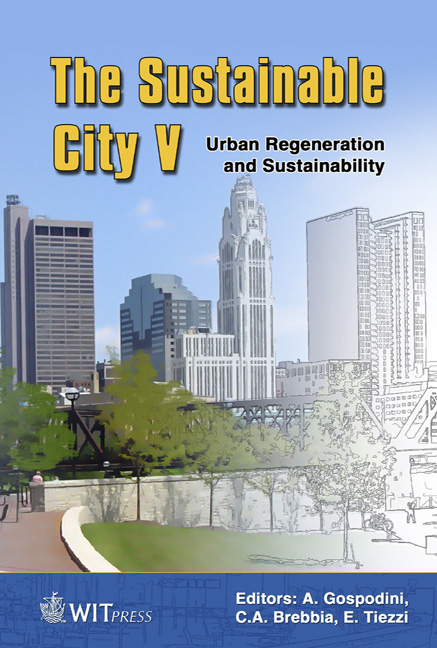(The Hidden City) Between The Border And The Vacuum: The Impact Of Physical Environment On Aspects Of Social Sustainability
Price
Free (open access)
Transaction
Volume
117
Pages
11
Page Range
365 - 375
Published
2008
Size
2689 kb
Paper DOI
10.2495/SC080351
Copyright
WIT Press
Author(s)
E. Douvlou, D. Papathoma & I. Turrell
Abstract
\“…the city is saturated with people, their movements; millions of eyes watching the world…. surely the city is well-known?” (Borden et al. The Unknown City: Contesting Architecture and Social Space, MIT Press, pp. 274–275, 2001). In this statement, Pile questions how-and-why particular urban spaces become known and unknown. Implicit within the notion of social sustainability is social cohesion through social interaction, promoting health and well being through security and sense of place. Movement, at different scales, accessibility and connectivity, are vital in order to experience places and interact with people. This paper examines the way certain areas within a city are segregated or \“hidden”, as a result of the physical environment that defines them, by creating borders and vacuums, and discusses the results of surveys and movement analysis of local population. The indication is poor interaction between people from, and outside, these areas, as well as spaces that become \“unfamiliar places”. Those identified border vacuums then become more than physical boundaries; they define the existence, and therefore aspects of the social sustainability, of whole communities. Keywords: social sustainability, physical environment, border vacuums, hidden city. 1 Introduction There are many concerns today about the environmental impact of our lifestyles and activities and how this can be mitigated. However there is little emphasis on sustainability in social terms. Is an area safe? Well connected to other areas?
Keywords
social sustainability, physical environment, border vacuums,hidden city.





